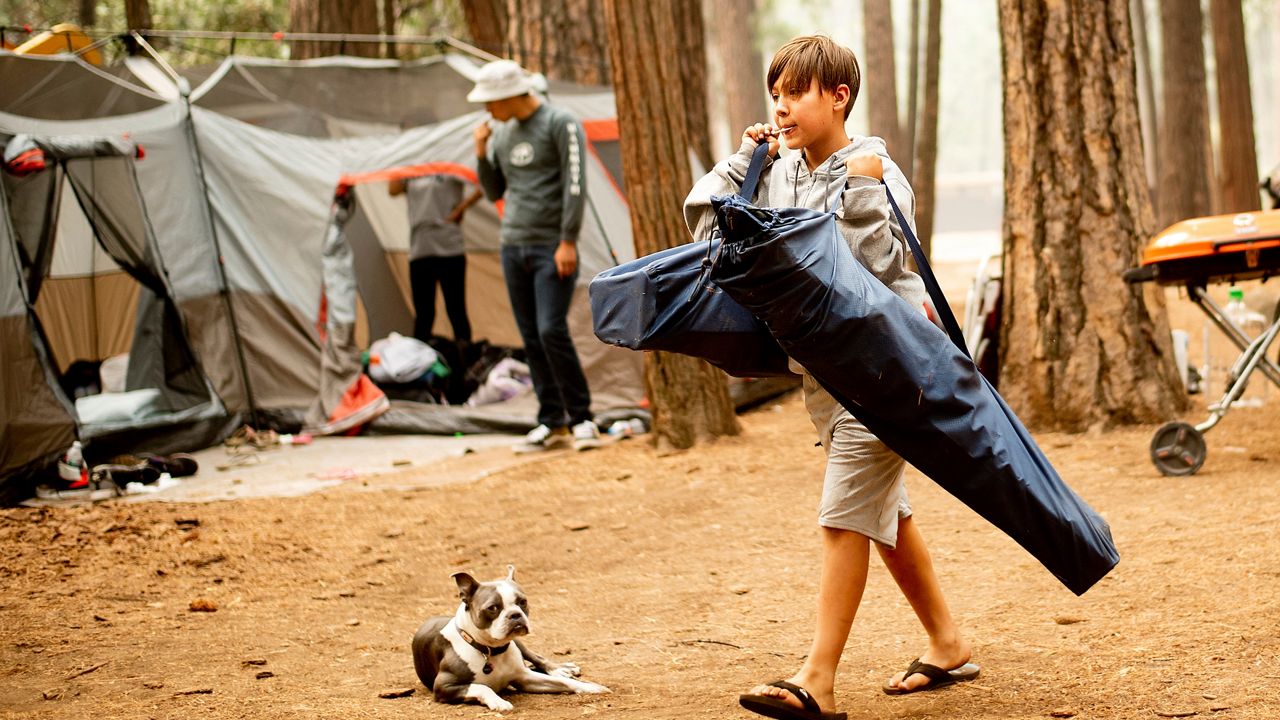At least 1.4 million households and other residential customers in New York are behind on electric and natural gas bills — a number that soared during the pandemic — and consumer advocates are calling on the state to pay off their ballooning debt with federal funding.
In the spring of 2020, New York passed the nation's only utility shut-off moratorium protecting heating, power water, cable and telephone customers. That moratorium expired Dec. 21, though existing state regulations restrict utilities from shutting off heat and electricity until April 15.
New Yorkers could see shut-offs in coming months.
Electricity and gas customers in New York owed nearly $1.8 billion as of January 2022, according to data reported by utilities to the State Public Service Commission. That's more than double their debt to utilities before the pandemic.
Caroline Ourso, 30, a Brooklyn freelance photographer who lost work in the pandemic, said the state's rental assistance program approved her application for over $1,400 in electricity and gas bills last year.
But the state has yet to release that money, and utilities warned her about potential shut-off over the winter. By early December, a state representative told Ourso that New York would release the utility payment in the next few weeks.
“That never happened,” Ourso said.
New Yorkers can avoid shut-offs by setting up payment plans with utilities. But only a fraction of customers — about 250,000 — have done so, according to the state data.
Ourso signed up for a payment plan but doesn’t know whether utilities will reimburse her payments when the state releases the aid. “It’s definitely been very frustrating," she said.
Consumer advocates say federal and state governments must address utility debt that surged in 2020 and has continued to increase as fuel prices soar and inflation rises.
Debt could have severe consequences for society's most vulnerable. New York’s utility data doesn’t have breakdowns by race or ethnicity, but advocates warn shut-offs and debt collection practices will hurt Black, Latino and Indigenous communities disproportionately.
“People end up unable to keep their home or apartment or dwelling because they lose electricity or they lose water, they end up homeless,” said David Springe, executive director of the National Association of State Utility Consumer Advocates.
Groups including the AARP and the Public Utility Law Project are calling on Gov. Kathy Hochul to dedicate $1.25 billion in this year’s budget for unpaid energy bills and $400 million for water bills. Advocates also want $200 million in tax credits to forgive water, telephone and internet bills.
Hochul’s budget proposal includes $2 billion in COVID-19 relief, but she and lawmakers are deciding where exactly that money should go. Lawmakers face a deadline to have a budget in place by April 1.
California set aside $1 billion in federal COVID-19 aid last year for electricity and gas bills. Advocates there are now asking for $3 billion more for utility and water deb relief.
“In the next few months, hundreds of thousands of people are in danger of being disconnected again,” said Mark Toney, executive director of the San Francisco-based Utility Reform Network.
New Jersey has spent about $30 million of $250 million lawmakers set aside last year for residential utility debt, which has also more than doubled in that state during the pandemic.
“There are some people who have been caught in this pandemic who have never had the necessity to apply for assistance programs,” said Joseph Fiordaliaso, president of New Jersey's Board of Public Utilities. “But I hope and I implore them to really reach out, because we want to help.”
New York has taken steps to help consumers, including expanding eligibility for bill discount programs.
It used $188 million in federal Home Energy Assistance Program funds to cover utility debt for about 115,000 low-income households since September, and sent $28 million to households in danger of shut-offs or exhausting propane or other fuel supplies. The state also dispersed $4 million of $70 million in federal water utility relief.
New York also has a $2.4 billion, federally funded rental assistance program, which promised up to 12 months of relief for rent and electric and gas bills.
Tens of thousands of people applied for utility aid, but New York's program only provided 359 households with utility assistance through December — the nation’s lowest amount, according to an Associated Press review of U.S. Treasury data.
Texas, in contrast, has helped over 120,000 households pay utility bills.
Major utility companies in New York agreed to protect about 77,000 applicants from disconnection while their applications are pending, according to state Office of Temporary and Disability Assistance spokesperson Anthony Farmer.
New York's rental assistance program has run out of money.
But Farmer said the state will dip into other federal funds to cover all 77,000 applicants once the state verifies how much they owe.
About 6% of those applicants have received such help so far this year. New York has used $4.1 million in Home Energy Assistance Program funds to pay utility arrears for almost 3,500 households. The state has used an additional $1 million in tax credits for utilities to settle arrears for over 900 households.
Farmer said the state is making “considerable progress” on one bureaucratic hurdle: cross-checking information that tenants provided about their utility debt.
Farmer declined to estimate when New York will finish verifying all 77,000 applications.
But Farmer expects the pace of utility payments will “pick up over the coming weeks.”
Some lawmakers have proposed prohibiting electricity, gas and water shut-offs until June 30 for people with financial hardships stemming from the pandemic.
Richard Berkley, executive director of the Public Utility Law Project, said his group works with low-income people who are worried about how long New York will continue to delay releasing aid, despite promises.
“Utilities are busily sending them termination letters every couple of weeks,” Berkley said.









